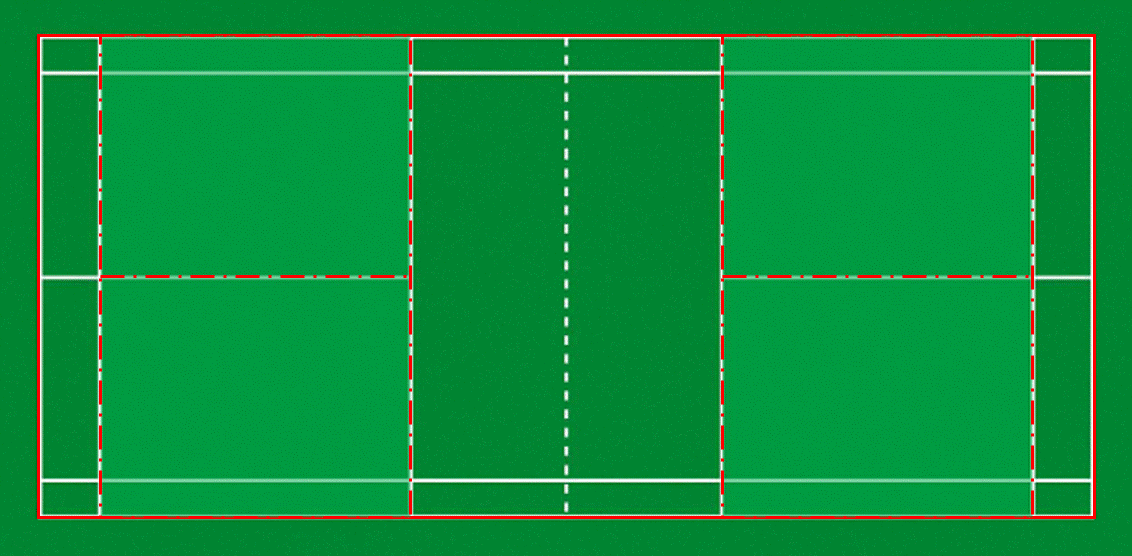The basic idea of badminton is for one player or team to hit the suttlecock (also called a bird or birdie or just a shuttle) from their side of the court over the net so that it will land on the floor inside the court on the other side of the net without the opponent(s) being able to return it. If a player successfully lands the shuttle inside the court on their opponent's side of the net they score a point. If a player fails to hit the shuttle over the net or hits it over but so it lands outside of the court then their opponent scores the point.
Matches are generally 'best of 3' games (i.e. the first player to win 2 games wins the match) with games played to 21 points with a 2 point margin over the opponent (if the score reaches 20:20, then continue playing until someone gets 2 points ahead, e.g. 23:21 or 24:26).
Points are scored for every rally regardless of who is serving (unlike in the old days when you could only win points on your own serve).
Doubles v. Singles
Singles matches involve just 2 players and the court is narrower than for doubles (as shown below). If the server wins the point they continue to serve until they lose a point and then their opponent gets to serve. Players serve from their right hand service box if they are on an even score and from their left hand service box if they are on an odd score. Players serve diagonally over the net into their opponents service box. After the serve the 'active' area of the court expands out to the limits of the Singles Court.
SINGLES COURT - Inner side lines mark the edge of the court (solid red line) and the service box is long & narrow (red dashed line).
Doubles matches involve 4 players, and can be described as 'level doubles' (which means men v. men or women v. women) or 'mixed doubles' where each team of 2 includes 1 man & 1 woman. The doubles court is wider than for singles, but the service boxes are shorter (see below). As with singles, players serve diagonally so the shuttle will land inside their opponent's service box, serving from the right hand side when they are on an even score and left hand side for odd scores. A player continues serving until they lose a point when the service is taken over by their opponent. Players take turns to serve, not after each point but after each change of serve.
DOUBLES COURT
Outermost lines mark the edge of the court (solid red line) but the service box is short & wide (red dashed line).


